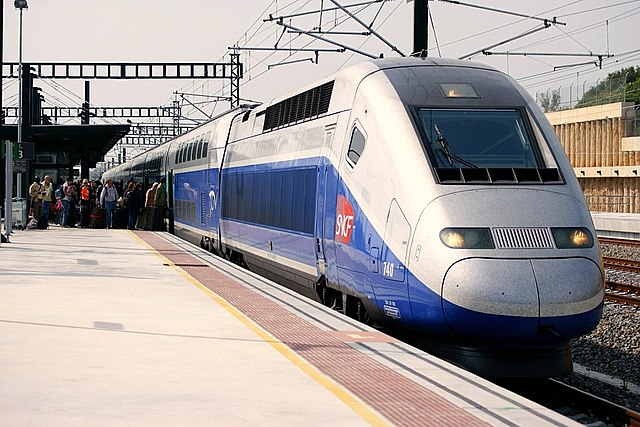Rail transport in France is marked by a clear predominance of passenger traffic, driven in particular by high-speed rail. The SNCF, the national state-owned railway company, operates most of the passenger and freight services on the national network managed by its subsidiary SNCF Réseau. France currently operates the second-largest European railway network, with a total of 29,901 kilometres of railway.
TGV at Gare de l'Est in Paris.
Regional train at Gare de l'Est in Paris.
Gare Saint Lazare in Paris.
Bayeux station in the Normandy region.
The Société nationale des chemins de fer français is France's national state-owned railway company. Founded in 1938, it operates the country's national rail traffic along with Monaco, including the TGV, on France's high-speed rail network. Its functions include operation of railway services for passengers and freight, as well as maintenance and signalling of rail infrastructure. The railway network consists of about 35,000 km (22,000 mi) of route, of which 2,600 km (1,600 mi) are high-speed lines and 14,500 km (9,000 mi) electrified. About 14,000 trains are operated daily.
TER PACA service west of Marseille
A high-speed train TGV Duplex from the SNCF
TGV 4402 operation V150 reaching 574 km/h (357 mph) on 3 April 2007 near Le Chemin
SNCF Class BB 67400 diesel locomotive at Amiens station








